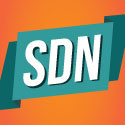Spanish operator wants to get rid of its domain-specific controllers and thinks standardization efforts will make that possible.

MADRID -- Zero Touch Automation Congress 2019 -- Telefónica is on a mission to blow up today's software-defined networks (SDNs) and replace them with a much simpler alternative.
The Spanish telecom incumbent today announced details of a new initiative called iFusion, the final goal of which is to sweep away the layer of domain-specific SDN controllers used in today's networks and replace them with a single "end-to-end" controller.
A successor to the operator's Fusion project, under which it has already made investments in SDN technology, iFusion would take advantage of speedy progress on the standards front to simplify the SDN approach, says Juan Carlos Garcia, Telefónica's director of networks and architecture.
Right now, the barrier to using an end-to-end controller is a small gap in the standardization of the "southbound" interface between different network elements, he explains. "There is still 5-10% that needs to be completed and for this reason it is difficult to have an end-to-end controller that connects every single element today," he tells Light Reading on the sidelines of this week's Zero Touch Automation Congress in Madrid.
His workaround is to ensure that Telefónica's vendors of microwave and IP transport equipment provide their domain-specific SDN controllers with a "northbound" interface that can be connected to the operator's systems. Every request for proposal that Telefónica issues to these companies now includes this northbound interface requirement.
Next year, the plan is to link the domain-specific controllers to a new end-to-end controller by taking advantage of these northbound interfaces. But after that, at some unspecified point in the future, Telefónica plans to get rid of the domain-specific controllers and operate solely with the end-to-end one.
It is thanks to swift movement on standardization that Garcia believes this will eventually become possible. "This gap in standards will be solved very quickly," he says. Previously, Garcia had credited groups including the Internet Engineering Task Force and the Open Networking Foundation with the definition of the requisite interfaces.
You're invited to attend Light Reading's Big 5G Event! Formerly the Big Communications Event and 5G North America, Big 5G is where telecom's brightest minds deliver the critical insight needed to piece together the 5G puzzle. We'll see you May 6-8 in Denver -- communications service providers get in free!
But the Telefónica mission has already attracted skepticism from one industry source involved with SDN technology, who preferred to remain anonymous. "I don't think you can," he said when asked if scrapping domain-specific SDN controllers was a realistic objective. "You will need some hierarchy of controllers. It is somewhat technology-specific and is not going to be that simple. You cannot have one controller that is so broad, and I don't think the domain-specific controller is going away."
Garcia hints at possible resistance to the SDN plans within Telefónica when he says there are "many different opinions in the company" on the topic of SDN controllers. And while the objective is to get rid of the domain-specific controller, Telefónica is clearly avoiding any giant leap from one system to another. "We prefer to do it in steps to get there," says Garcia.
Even so, the company's proposed schedule looks aggressive. After introducing the end-to-end controller next year, Telefónica is anticipating "complete standardization" of the southbound interface in either 2020 or 2021, according to slides shown at today's event. "We are involving all operations in the iFusion program," Garcia told attendees this morning.
SDN seems to have been in the shadow of other technologies and trends in the last couple of years, as automation and "zero touch" operations have grabbed all the attention at industry events. Today's update could thrust it firmly back into the limelight.
Related posts:
— Iain Morris, International Editor, Light Reading
Read more about:
EuropeAbout the Author(s)
You May Also Like











